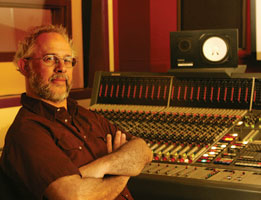|
|
Fearless Production |
August 2005 |
|
When it comes to assessing music production and performance, it's all about relativism. There is no right or wrong, only what works ĺ─ţ and that is a matter of taste. Sales figures notwithstanding, we can't actually measure artistic success. In his January 2004 ĺ─˙Final Mix: Measuring Up,ĺ─¨ Larry the O posited that there is ĺ─˙no single, universal measure of an artist's workĺ─¨ except, perhaps, standing the test of time. I'll accept that, with the understanding that sometimes we can evaluate success in terms of personal artistic goals rather than as a form of communication with others.
Following that philosophy, and given that today's technology lets us create and save huge numbers of tracks and mixes, there is no reason to fear experimenting with innovative techniques. After all, we don't have to keep takes that we don't like.
In ĺ─˙Do the Wrong Thingĺ─¨ (see p. 37), Julian McBrowne and his various interview subjects suggest an assortment of techniques for going beyond the usual production methods to achieve creative goals. As producer Michael Brauer puts it, ĺ─˙I encourage you to break the rules.ĺ─¨ Indeed, each culture has traditions regarding composition, performance, and what is considered ĺ─˙goodĺ─¨ music, and there are times when we may want to maintain those traditions. In that context, there are rules that one should understand before choosing to violate them. As recording musicians, engineers, and producers, we can define techniques that are calculated to achieve specific sonic, musical, and commercial goals. For instance, we can identify ways to mic and record an acoustic guitar to achieve specific results, and we can discuss mixing techniques that make a vocal stand out in the mix. These techniques are part of our shared recording tradition, although we generally treat them more as guidelines than as rules.
But if we want a perverse-sounding acoustic guitar and vocals buried in a chaotic mix that is intended to stretch the listener's ears, tried-and-true techniques aren't necessarily appropriate. At that point, the guidelines cease to apply. In fact, when we wish to explore new musical and production spaces, then there arguably are no longer rules to break, only results.
There's not even a rule that says you shouldn't damage your gear, although financial considerations might lead us to be cautious. For example, guitarist Link Wray's classic sound was partially achieved by poking holes in the speakers of his guitar amp to achieve speaker distortion.
Sometimes radical methods do achieve commercial success; legendary producer Joe Meek virtually made a career out of that (see ĺ─˙Production Values: Meek Firstĺ─¨ in the February 2002 issue of EM). So even if commercial success is your goal, there may be good reasons to experiment when your instincts lead you in that direction. Besides, what is outrageous today could be mainstream tomorrow. Heavily compressed vocals were once a sign of clueless production; today, ĺ─˙overcompressionĺ─¨ is a useful and commonly used vocal-processing technique.
Whether McBrowne's specific suggestions appeal to you or not, the real message we want to get across is that absolutely anything goes if it serves your musical goals. When you are looking for something fresh, dare to be fearless. Because when it works, the wrong thing is just right. |
